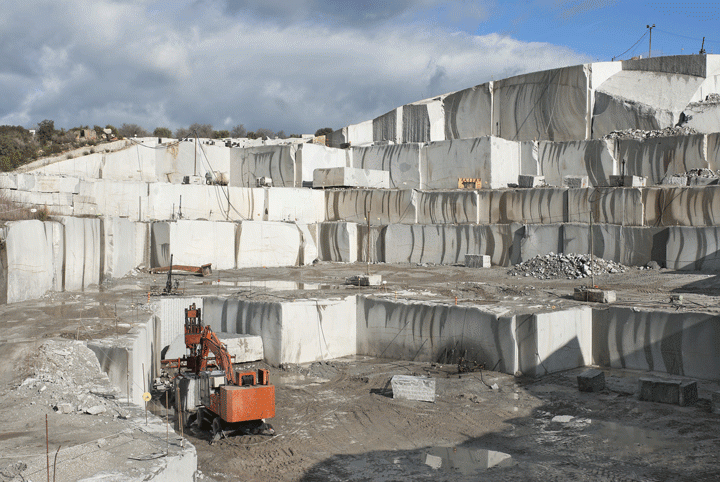Diving into of Granite Quarries in South Africa
Diving into of Granite Quarries in South Africa
Blog Article
Discovering the Rich Background and Lasting Practices of Granite Quarrying
As we stand on the precipice of revealing the elaborate tapestry of granite quarrying, a trip through time discloses not just the physical act of drawing out rock however also the social and historical significance woven right into the really material of this practice. From the old beginnings that laid the foundation for contemporary quarrying strategies to the lasting techniques that are forming the future of this industry, each chisel mark on granite surface areas tells a story waiting to be unearthed (granite quarries in south africa). The tradition of granite quarrying stretches far past mere extraction; it is a testimony to human ingenuity, strength, and the enduring appeal of this stunning rock
Ancient Origins of Granite Quarrying
Dating back to ancient human beings, the practice of quarrying granite has actually been an indispensable part of human background and architectural improvement. The earliest proof of granite quarrying go back to ancient Egypt, where enormous pyramids and complex sculptures were crafted from this sturdy stone. The Egyptians used primitive tools to draw out granite blocks from quarries, showcasing the relevance of this product in their huge constructions.
Moving on in background, the Greeks additionally made substantial payments to the quarrying of granite. The Greeks made use of granite in different architectural marvels, such as temples and sculptures, demonstrating their skill in shaping and sculpting this durable rock. The Romans better improved the strategies of quarrying granite, employing sophisticated devices like knives and hammers to remove and form granite for their legendary frameworks.
With the centuries, the method of quarrying granite has developed, with modern innovations boosting performance while preserving the ageless appeal of this natural stone - granite quarries in south africa. From old civilizations to modern contractors, the legacy of granite quarrying remains to form our world
Evolution of Quarrying Strategies
The evolution of quarrying methods has been marked by a continuous development towards higher efficiency and precision in removing granite. Early quarrying methods included manual labor with fundamental tools such as blades, hammers, and wedges to remove granite blocks from the earth.
Innovations in computer-controlled tools and 3D modeling have enhanced quarrying procedures, leading to very little ecological effect and boosted sustainability practices. As the demand for granite continues to climb, the evolution of quarrying strategies continues to be integral to meeting sector requires effectively and sustainably.
Social Importance of Granite
Granite holds an extensive cultural importance across various civilizations because of its long-lasting existence in architectural masterpieces and revered monoliths. From the majestic pyramids of Egypt to the intricate carvings of the Angkor Wat holy place in Cambodia, granite has actually been a material of choice for expressing splendour and longevity in social heritage. In ancient Rome, granite columns adorned holy places and public structures, signifying stamina and permanence. The social relevance of granite extends past its physical features; it embodies durability, stability, and timelessness, making it a sign of withstanding heritages and customs.

Lasting Practices in Quarrying
In the middle of the rich background of granite quarrying and its social value lies an expanding emphasis on sustainable techniques within the sector. As environmental understanding and problems regarding resource depletion have actually increased internationally, the quarrying industry has actually significantly embraced lasting methods to minimize its effect on the environment and bordering areas.

Furthermore, reclamation and rehabilitation of quarry sites post-extraction are essential to sustainable practices. By bring back quarried areas to an all-natural or beneficial state, such as creating wild animals habitats or leisure spaces, quarriers can offset the environmental impact of their procedures and contribute favorably to the neighborhood ecosystem.
Legacy of Granite Quarrying
With a historic backdrop soaked in craftsmanship and commercial progress, what withstanding impact has granite quarrying web link left on the landscape of modern-day society? The heritage of granite quarrying goes beyond simple removal practices; it has actually formed building marvels, city landscapes, and social heritage worldwide. The long lasting nature of granite has actually made it a recommended selection for monoliths, structures, and facilities, check here standing as a testimony to the skill and creativity of quarry workers throughout generations.
Additionally, the financial impact of granite quarrying can not be overlooked. The market continues to supply job opportunity and drive local economies in areas where granite extraction is prevalent. It has actually likewise spurred technical improvements in quarrying methods and equipment, bring about a lot more efficient and lasting practices.
In regards to sustainability, the legacy of granite quarrying includes initiatives to minimize environmental effects with reclamation jobs and liable source management. By balancing financial interests with ecological stewardship, the sector aims to make sure that future generations can continue to benefit from this long-lasting natural source.
Verdict

Report this page